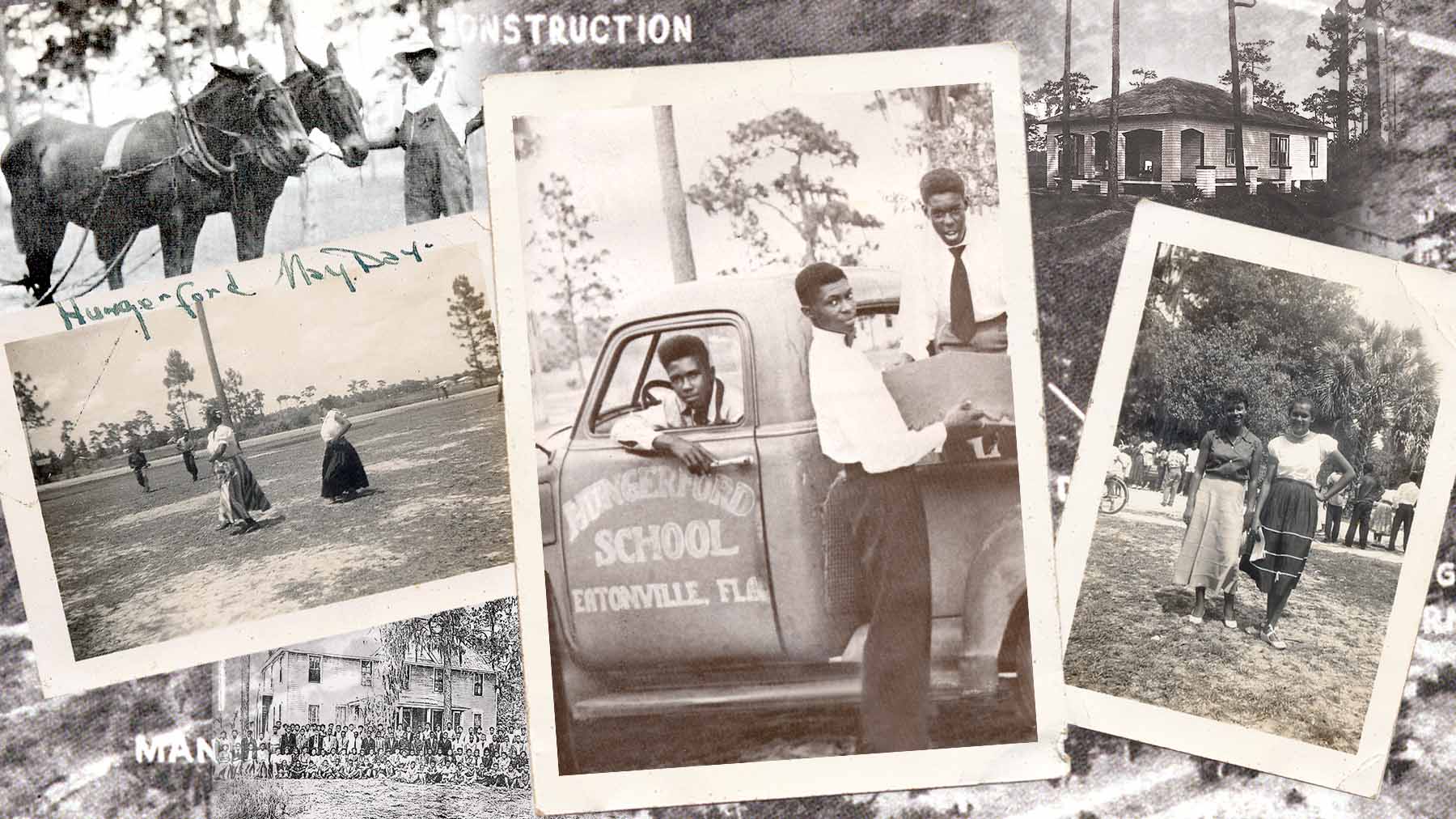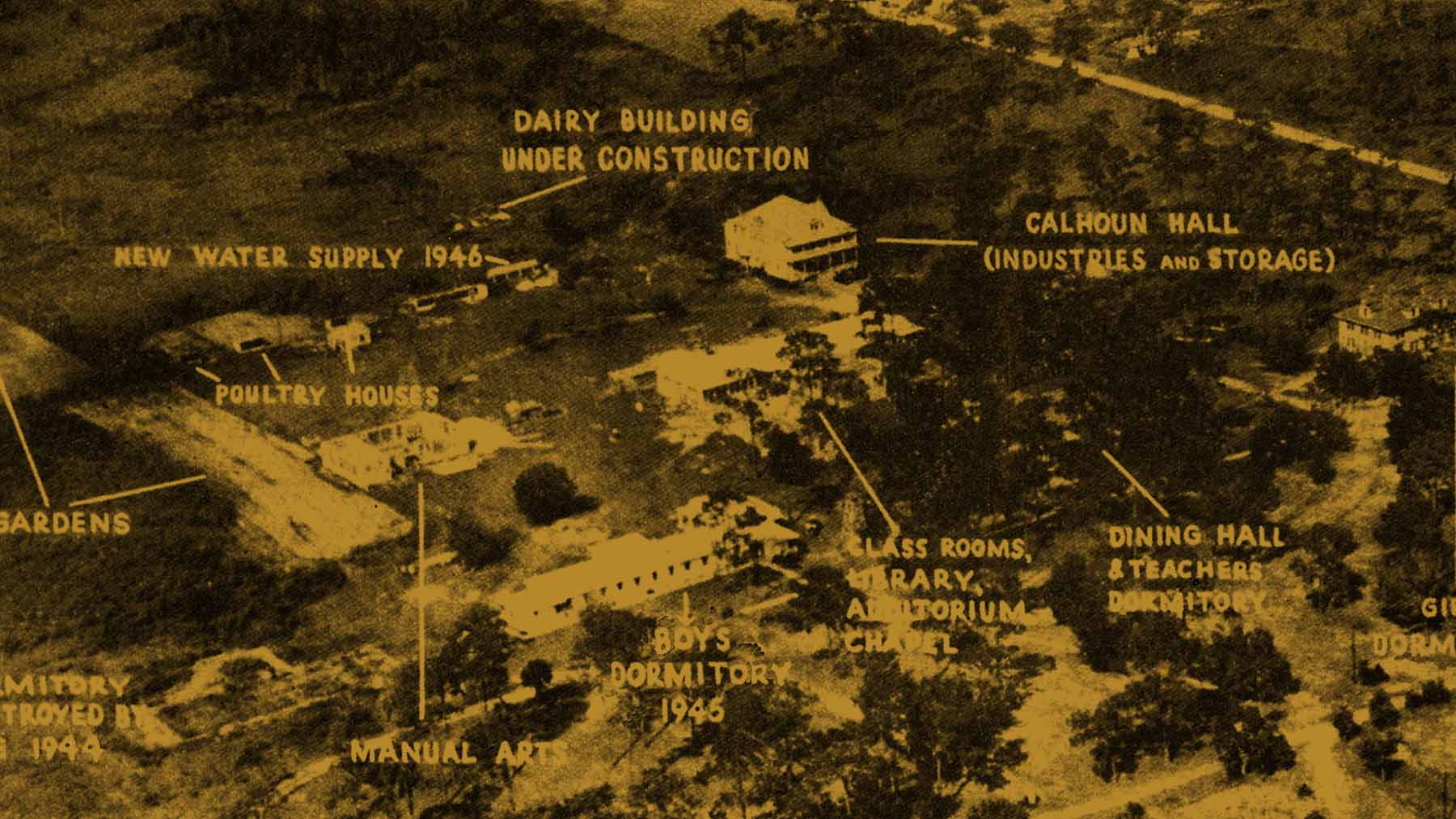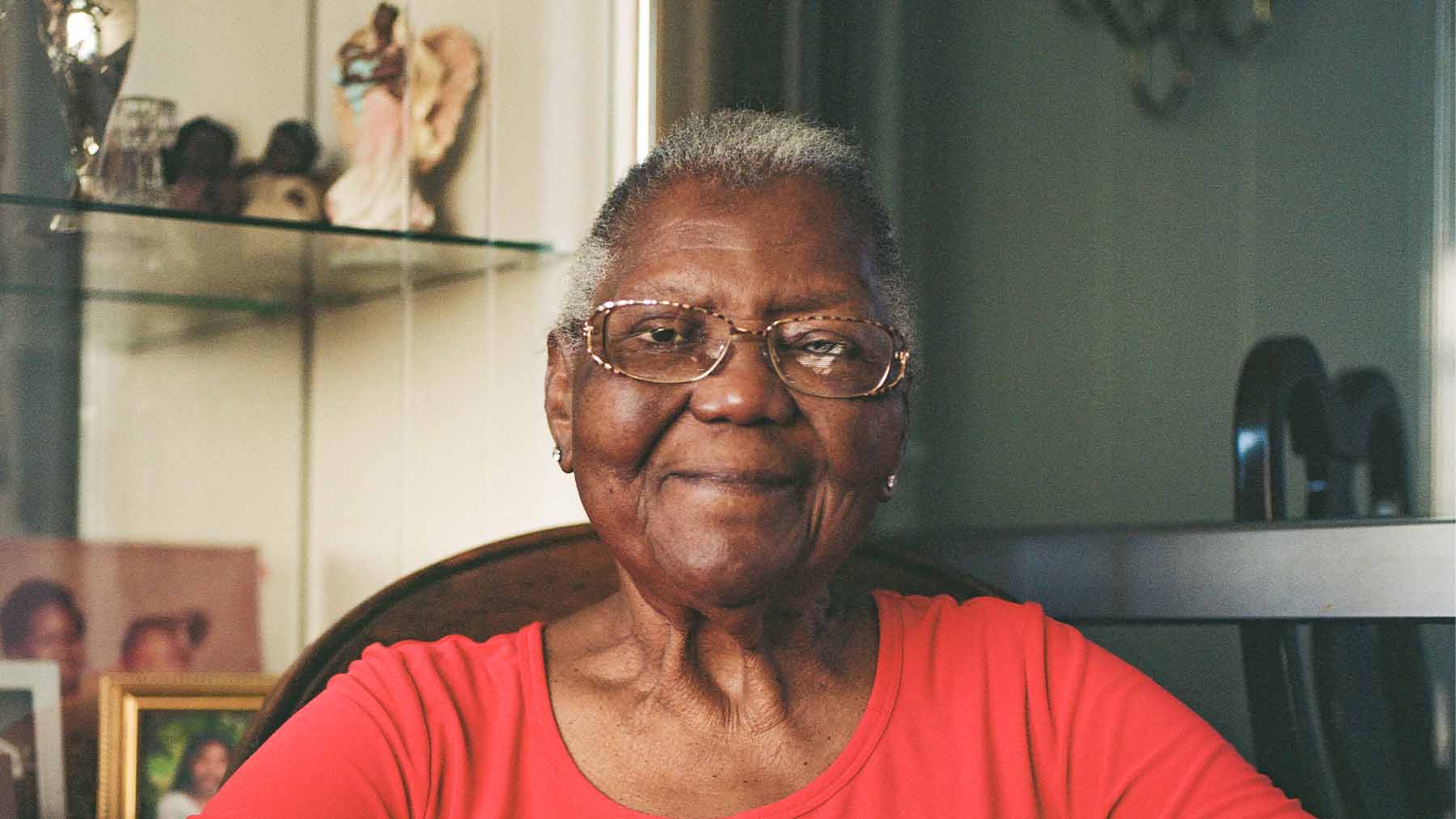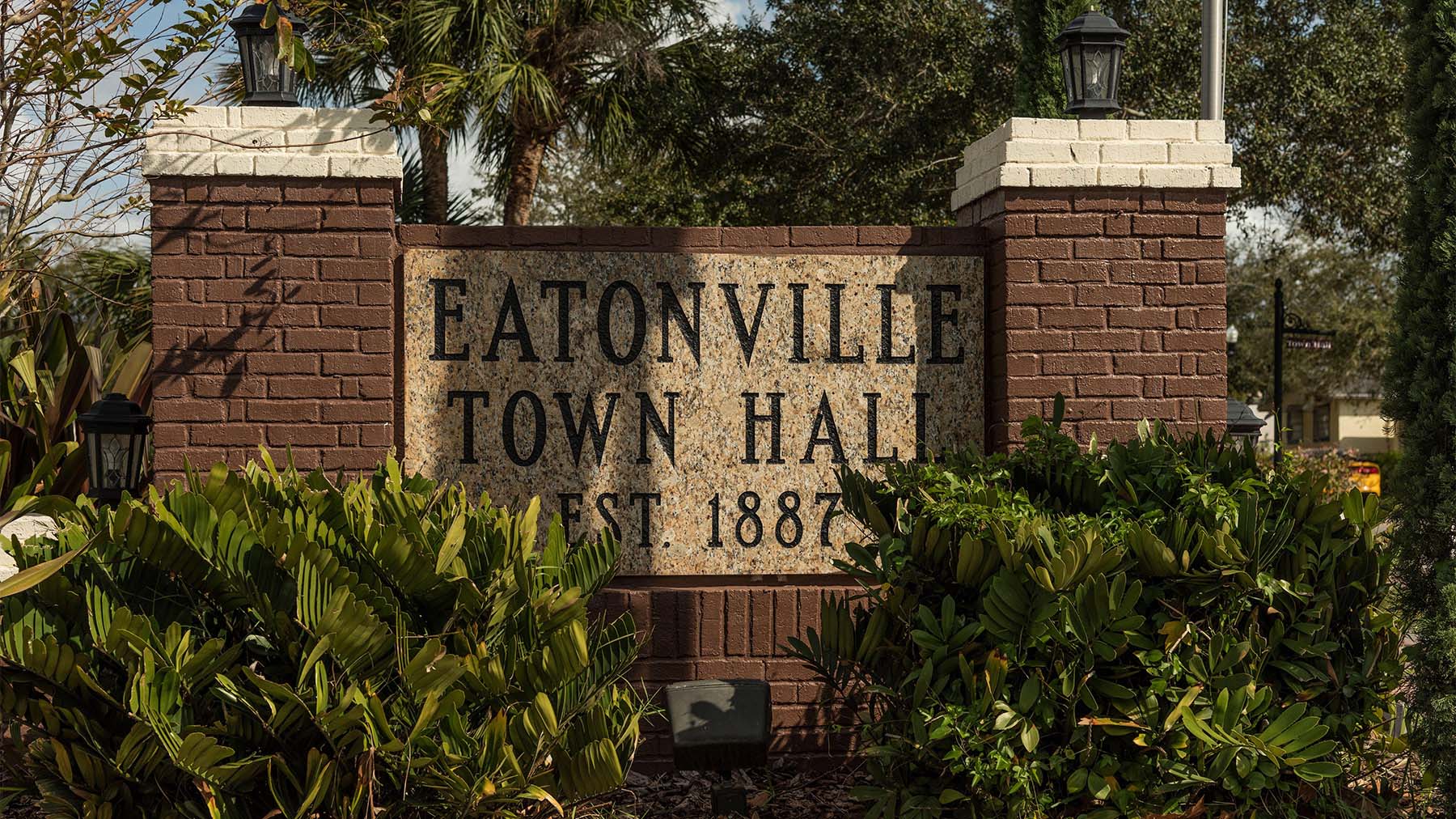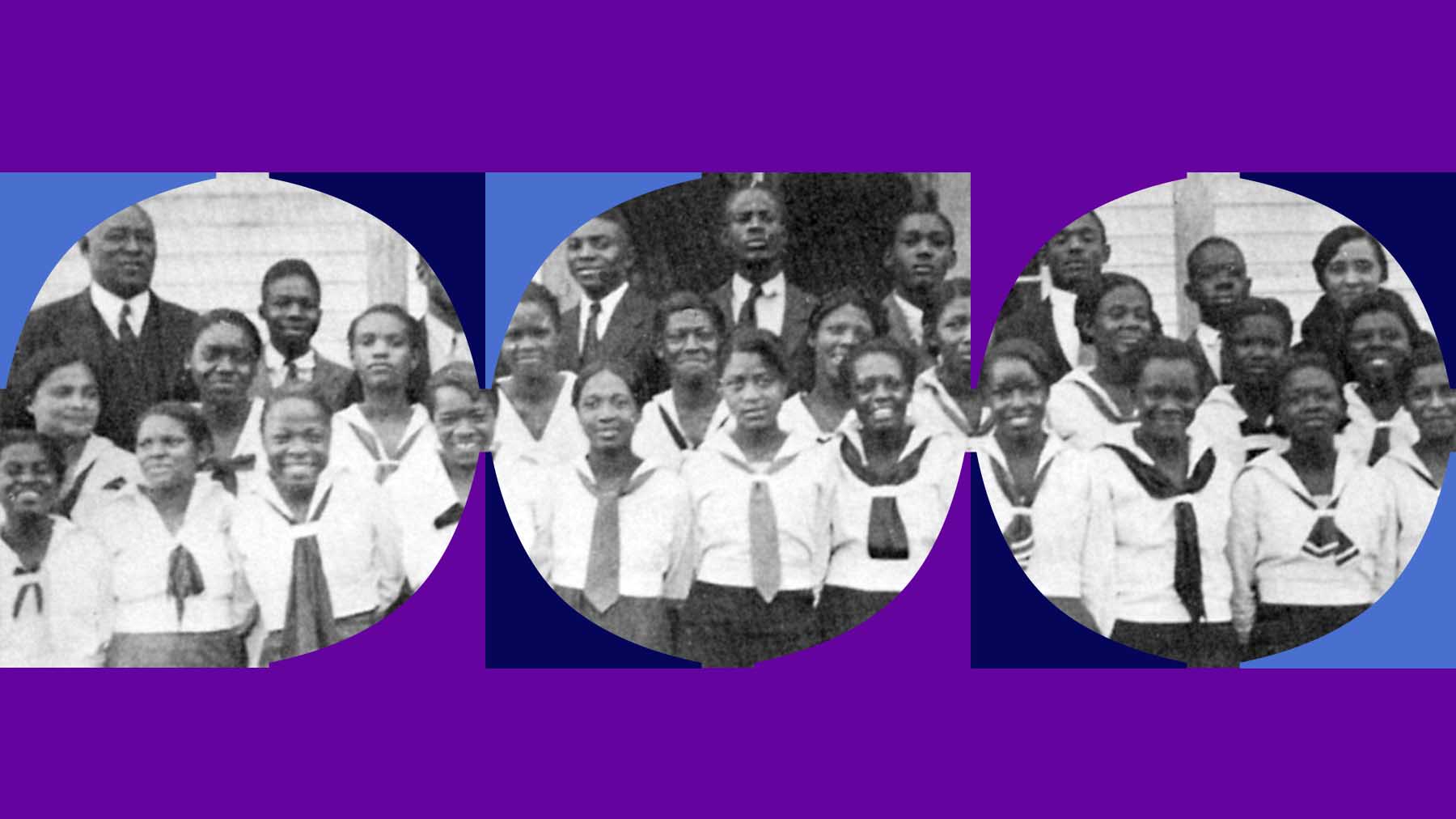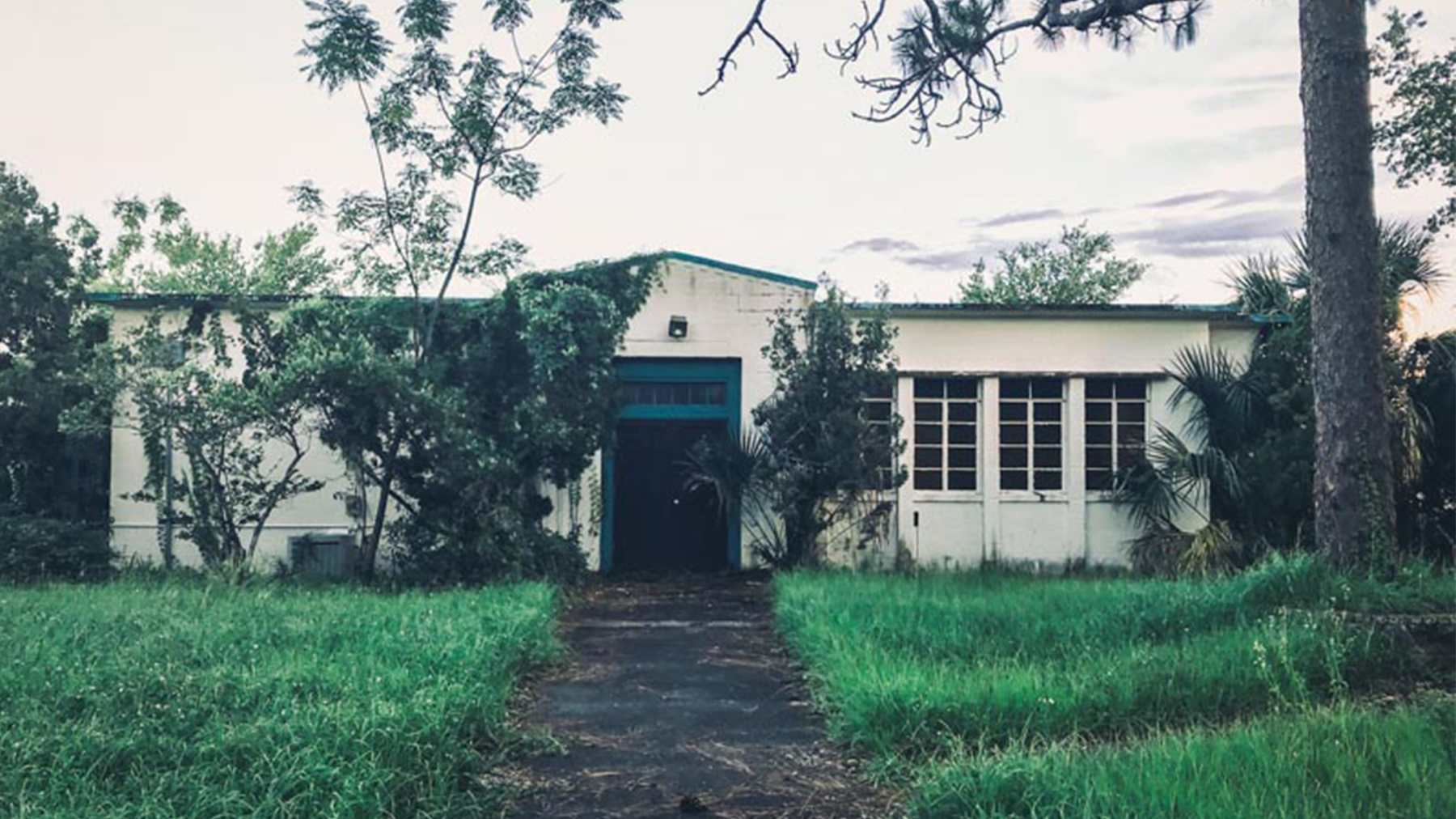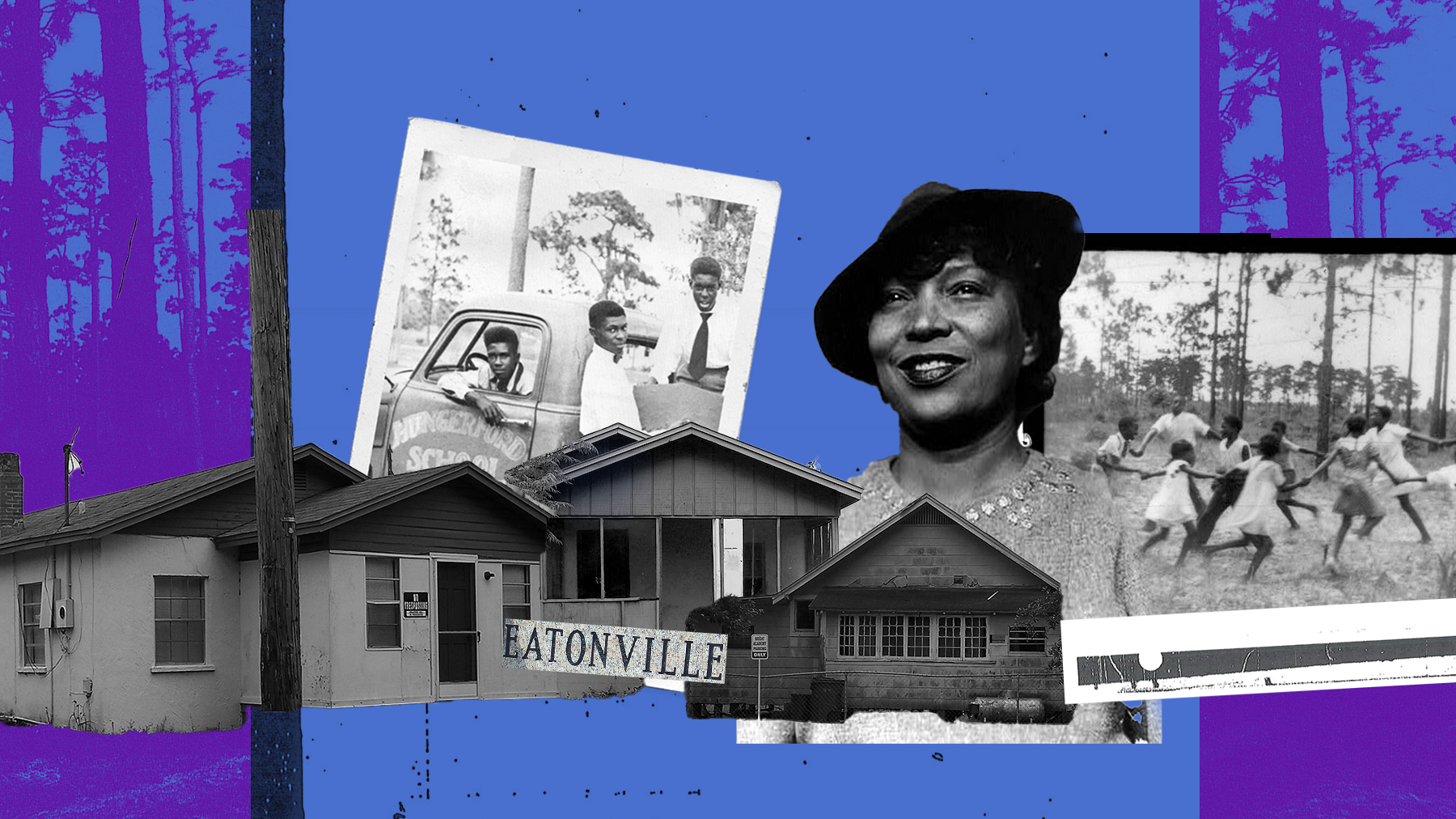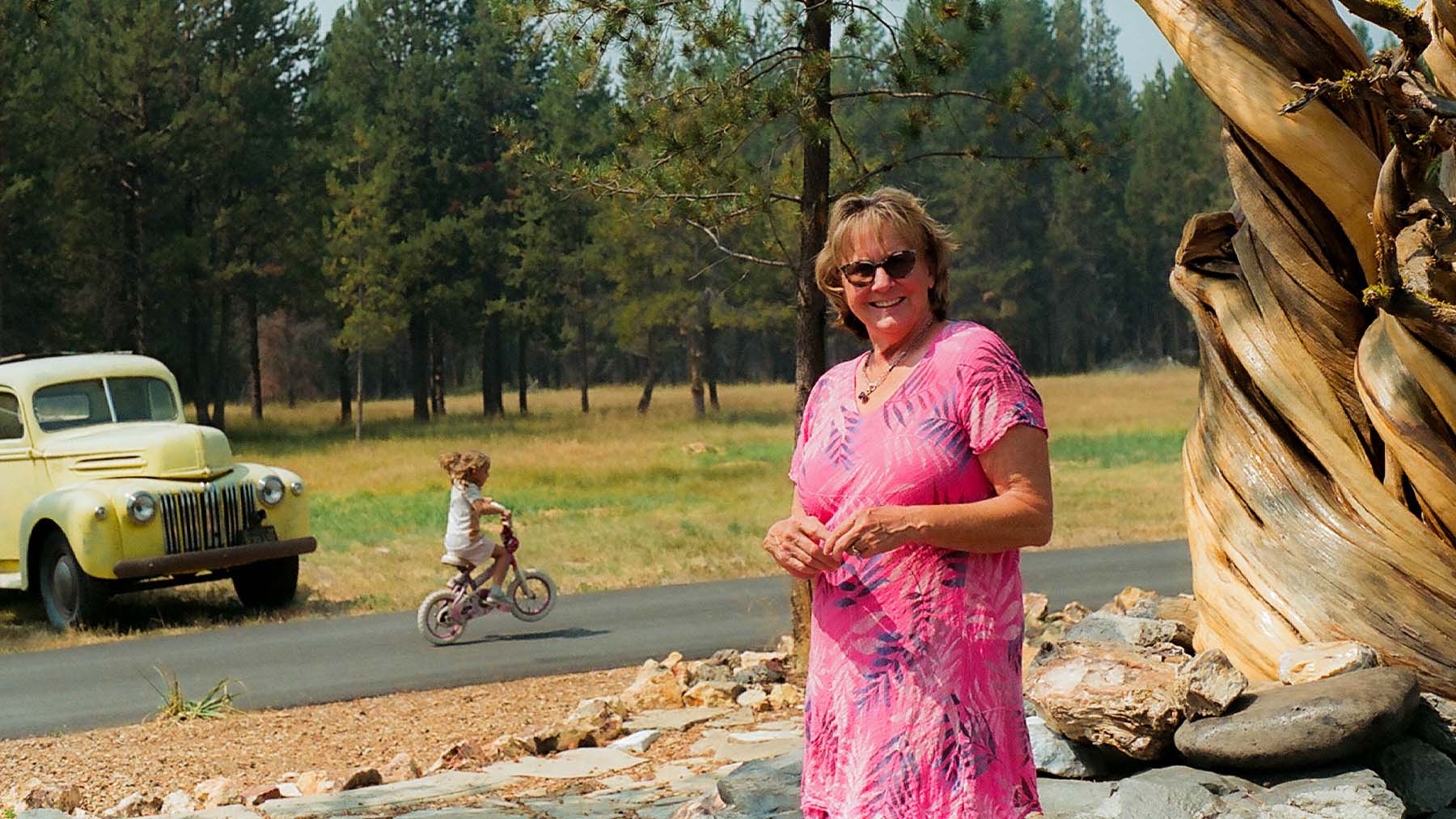Behind a chain-link fence six miles from the cacophony of Orlando, a jumble of old masonry sits quiet and still, the foundations of what was the heart of a historically Black community nearly obscured by tall grasses swaying in a hot Central Florida wind.
The Hungerford property, as it is known, makes up 15% of the tiny town of Eatonville, a 1.6-square-mile patch of modest homes and businesses that is one of the oldest incorporated Black communities in the U.S. For the county school board offering the 100-acre tract for sale, the developers eager to build on it and a narrow majority of the town council, it is clear what they see behind the fence: profit.
But if only they could gaze into Hungerford’s past, they would see the young Zora Neale Hurston, the queen of the Harlem Renaissance, skipping joyfully through the beloved Black town she grew up in and immortalized in her literary masterpieces. They would see a school founded with the help of Booker T. Washington filled with Black students thriving even as they were denied opportunities in the white-run world around them. They would see the mothers and fathers, the grandmothers and grandfathers of Eatonville come to life from old photographs still cherished by their descendants – dancing around a maypole, striding with confidence to and from a Black-owned sawmill and a brickworks, harvesting sugarcane and oranges on their own farms – and teaching their children the pride of a place of their own.
Today, 135 years after the 1887 founding of “The Town that Freedom Built,” that vision is clouded.
• TIMELINE: History of Eatonville, Florida
Eatonville, where 73% of residents are Black, faces what community activists call an existential choice. Either the Hungerford property is saved, opening the possibility of using the land to honor and build on the heritage of the town with a museum and other cultural and historical attractions, or the development “is going to eat Eatonville,” said Scot French, an associate professor of history at the University of Central Florida who has spent decades studying the historically Black community. “You know, it’s just going to devour it.”
The proposal has stirred discontent, opposition and, among many residents of Eatonville, a sense of betrayal.
A local nonprofit, the Association to Preserve the Eatonville Community, Inc., has been developing its own vision for converting the parcel into a destination for tourism and study that it hopes could spark an economic renaissance centered on the town’s rich cultural, sociological and literary history.
The town “is like having an artifact that’s still alive,” said Malissa Williams, senior staff attorney for the Southern Poverty Law Center’s Economic Justice Project, which is working with the group to support its efforts to ensure the land is used in a way that benefits the community and safeguards its future.
“They don’t want it to be just a fossil; they want this to be a vibrant living community that can be dedicated to the history of this property and the study of Zora Neale Hurston and her literary legacy. The SPLC wants to help this community exercise their self-determination and their power,” Williams said.

Sale greenlighted
At issue is the fate of the Robert Hungerford Preparatory School property, where with the assistance of Booker T. Washington, the leaders of Eatonville established a school in 1897 on about 300 acres, modeling it on the famed Black educator’s Tuskegee Normal and Industrial Institute, which is now Tuskegee University, in Alabama.
For decades the school operated as a high-quality private boarding and day school for Black students, with much of the food for students, faculty and staff grown on site. Students from throughout Florida, and also from Georgia, Alabama, North Carolina and South Carolina enrolled, attracted to the school’s quality vocational and academic classes.
During World War II, enrollment at the school declined. In 1951, the school district of Orange County, Florida, where Eatonville is located, purchased the property from the trustees who owned it, under the condition that the school would continue to be used to educate Black children. The sale went forward over the objection of one of the trustees, who contested the sale. Contending the transaction was in violation of the original purpose of the trust, the trustee’s case went all the way to the Florida Supreme Court. But after the court ruled the sale could proceed, the school district demolished the historic buildings of the original school and built a public school on the land.
In 1974, after an interstate highway had bisected the Hungerford property, the school district opted to sell off the section on one side of the highway, which no longer contained an operating school. To do so, the school system won permission from the courts to dissolve the restriction on that section mandating the use of the property as a school for Black children. The remaining part of the property, where Hungerford High School continued to operate, retained the restriction. After the school district closed the high school in 2009, district officials began eyeing the land for possible sale, subsequently agreeing to pay $1 million to successors of the original Hungerford trust in exchange for them releasing the restriction on the land.
Since then, the school district has continued to pursue sale of the property, a prime tract in the middle of the booming Orlando metropolitan area, to developers. In 2020, with little notice to the community, the school board demolished the high school. This past year the school board greenlighted a development group’s proposed $14.6 million purchase of the site.
What the developers propose would have enormous impact on Eatonville. The project envisions 372 townhomes and single-family housing units, along with extensive commercial and office space along a whole new “Main Street” of the town, which is now a mostly residential collection of historic wood-frame homes. Of the almost 100-acre parcel, just 25,000 square feet would be turned over to the town for “civic space” and 6,600 square feet for an “education pavilion.”
When the project first came before Eatonville’s town council in September, the members, all of them with deep ties to the town, split on whether to approve the rezoning that paves the way for the development to become a reality. Three members of the council approved the measure, citing a concern that Eatonville’s economic development is being left behind amid a sizzling real estate market. Two members, including the mayor, voted against it.
For the project to move forward, the proposed changes must be approved by the Florida state government. Then, at a second hearing, the town council must approve an updated zoning measure, as well as amendments to its general comprehensive plan. This second hearing of the town council has not yet been scheduled.
The mayor is holding a series of community meetings on the project with the assistance of the Association to Preserve the Eatonville Community. The next one is scheduled for Nov. 29 at the Eatonville Public Library at 6 p.m.
‘Strangers in our own land’
To N.Y. Nathiri, executive director of the Association to Preserve the Eatonville Community, the historic town is home. Born in nearby Sanford, she was raised in Eatonville on the stories of her grandfather, who came to Eatonville seeking a new start after losing his savings in the Great Depression. He would tell Nathiri about the visit to the Hungerford School by the legendary agricultural scientist George Washington Carver, and about Hurston, who was a family friend. When she looks through the fencing surrounding Hungerford, she sees a new start. With community involvement, creativity and funding, she envisions the creation of a Zora Neale Hurston Campus for the Arts, the Humanities and the Sciences.
“We are planning the economic development of a culture and community that is rich in history,” said Nathiri, who oversees the annual Zora Neale Hurston Festival of the Arts and Humanities (ZORA! Festival), which is held in Eatonville. The festival, now in its 33rd year, celebrates the cultural contributions of people of African ancestry around the world.
“We are not blowing smoke,” Nathiri said. “We have shown over three decades that people will come from all over the country to our annual festival. We know that cultural heritage tourists will come, will stay longer and will return. We know that this is not all Eatonville needs, but it’s a solid anchor. It’s not that we don’t want development, we want to do it in a way that is best for our community.”
What is being presented to the town instead, Nathiri said, is no less than the erasure of Eatonville’s ability to create its own future.
“This [proposed development] will change the face of Eatonville,” Nathiri said. “In our community, we will be like strangers in our own land. The people moving into the town and voting in the town will no longer look like us. Ultimately, we will not be welcome in this ‘New Eatonville.’ If we don’t fight against that, we are actually not living up to the legacy of our ancestors, people who one generation after enslavement had the confidence and competence to incorporate a community and to govern themselves. We are allowing the powers that be to strip from us what belongs to us.”
What belongs to the people of Eatonville is a history that runs deep – and that, like much of Black history in the United States, is little taught, known or acknowledged. But the story of towns like Eatonville is enmeshed in the best and worst of U.S. history.
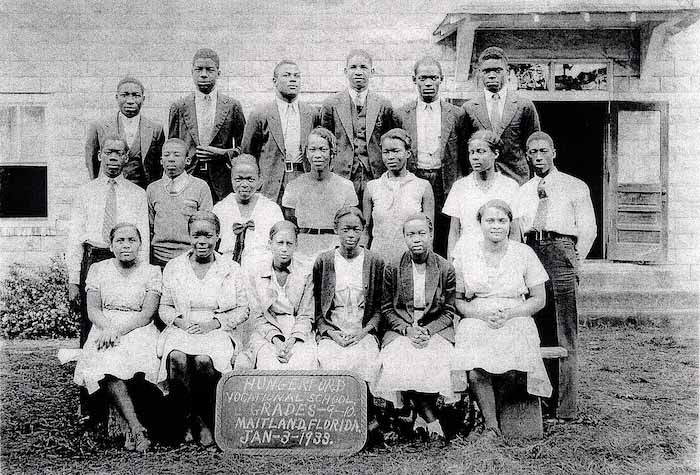

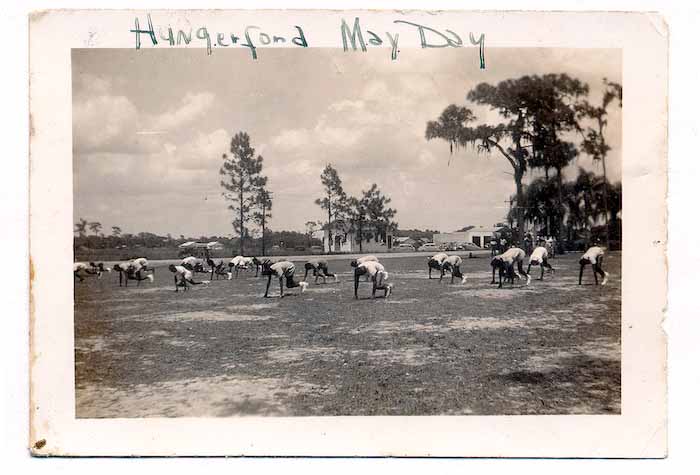
Center of Black learning
Black settlements in the U.S. began organizing in the years after the Civil War, as newly emancipated people were inspired to create their own enclaves. As Jim Crow segregationist laws took firm hold, the towns became both products of segregation and vehicles, for their residents, of self-determination.
“The establishment of these communities embodies civil rights,” said Everett Fly, a landscape architect in San Antonio, Texas, who has been studying Eatonville for more than three decades. “Coming out of slavery, if Black people didn’t own land, they couldn’t vote. If they couldn’t vote, they couldn’t set up schools to educate themselves, places of worship to pray, their own spaces where they could pursue happiness. These towns would allow all this. You start pulling the threads and you find more and more of these communities. And then you realize how much they fit into the evolution of America.”
Historians estimate that more than 2,000 Black settlements were established in the U.S. after 1885. Of those, fewer than 200 became all-Black incorporated communities with autonomous Black city governments. Eatonville, founded by 27 men on land sold to them by a former Union Army captain, Josiah Eaton, was one of the first. The purchase was made possible in part by New York philanthropist Lewis Lawrence, who donated money to the Black founders with the intention that it become a center of Black self-government.
“An all-Black town when Eatonville was founded was such a curiosity,” Fly said. “It was a model of success. It was a proof. It helped to debunk this myth of Black settlements as the bottom lands. The idea is this was a model of what could be if people had the chance to build good homes and livelihoods.”
As Eatonville thrived, its school became a center of Black learning. Accommodating the relatively affluent Black population, a music club opened in town, and Black artists, among them B.B. King, Cab Calloway, Duke Ellington and James Brown, performed there.
The connection of Hurston, one of the preeminent writers of 20th-century African American literature, to Eatonville is deep. Her father, the Rev. John Hurston, was the town’s third mayor and the second pastor of the town’s Macedonia Missionary Baptist Church. Descriptions of Eatonville are seeded through Hurston’s work. In Hurston’s most famous novel, Their Eyes Were Watching God, she writes of the town’s founding through the eyes of the main character. And as Hurston wrote in her memoir, Dust Tracks on a Road, the town’s spirit of possibility, as embodied in her mother, helped make her who she became.
“Mama exhorted her children at every opportunity to ‘jump at de sun,’” Hurston wrote. “We might not land on the sun, but at least we would get off the ground.”
Victory and reinvigoration
In recent decades Eatonville has faced increasing threats to its existence. In 1987, a planned highway widening would have cut five lanes of pavement right through the center of town. That’s when Nathiri, a former university librarian and community college writing teacher, founded the Association, along with other preservationists.
The group won that fight. Kennedy Boulevard, which runs through the heart of Eatonville, remains a two-lane road.
With Nathiri helming the efforts, the victory reinvigorated the town, and recognition at last of its historic significance. In January 1990, the first Zora Neale Hurston festival attracted more than 10,000 people to lectures, an art exhibition and an outdoor festival. A banquet that was part of the festival featured speaker Alice Walker, the Pulitzer Prize-winning author of The Color Purple. Six months later, the Association established a small gallery in a building on Kennedy Boulevard, the Zora Neale Hurston National Museum of Fine Arts. Devoted to exhibiting the works of artists of African descent, it has only about 700 square feet of gallery space. But it has received state and federal funding, including from the National Endowment for the Arts. In December 2021, it was awarded a $50,000 grant from the SPLC, one of five grants by the civil rights organization to support the work of museums, monuments and cultural centers devoted to Black history.
Just as the museum and the festival were born out of crisis, the hope is that the current crisis will bring further renewal.
There are signs the effort may be gaining steam – and that a younger generation may be ready to reclaim the history of Eatonville.
Earlier this month, at a community meeting on the development proposal for the Hungerford site, a young man named Julian Johnson was one of the speakers. The 29-year-old financial services professional grew up in Eatonville and returned to live there after college. He said he stumbled on the issue when, interested in investing in the Eatonville community, he attended a planning meeting.
During college, Johnson said he had spent time on the Hungerford property, working for the town recreation department and attending functions at the high school.
“For them to just tear it down and turn it for profit really concerns me,” Johnson said.
When he got home from the meeting, Johnson created an online petition to save the property, seeking 100 signatures. After two days it had already well passed its goal. On his Instagram account, he added a photo of himself pointing to Eatonvillle on a map of Florida. Emblazoned on the post were two words: Take Action.
“We’re like a decision away from losing our land and our town,” Johnson said. “Land is power. Land is money. Land is our heritage. Eatonville is a part of me. Eatonville made me who I am today. I’m going to put myself out there to try to save and protect this town.”
Picture at the top: The Hungerford property in Eatonville, Florida, was the site of a school established in 1897 with the help of Booker T. Washington. But critics say a proposed residential and commercial development threatens to erase the legacy of one of the oldest incorporated Black communities in the U.S. (Photo illustration by the SPLC)



